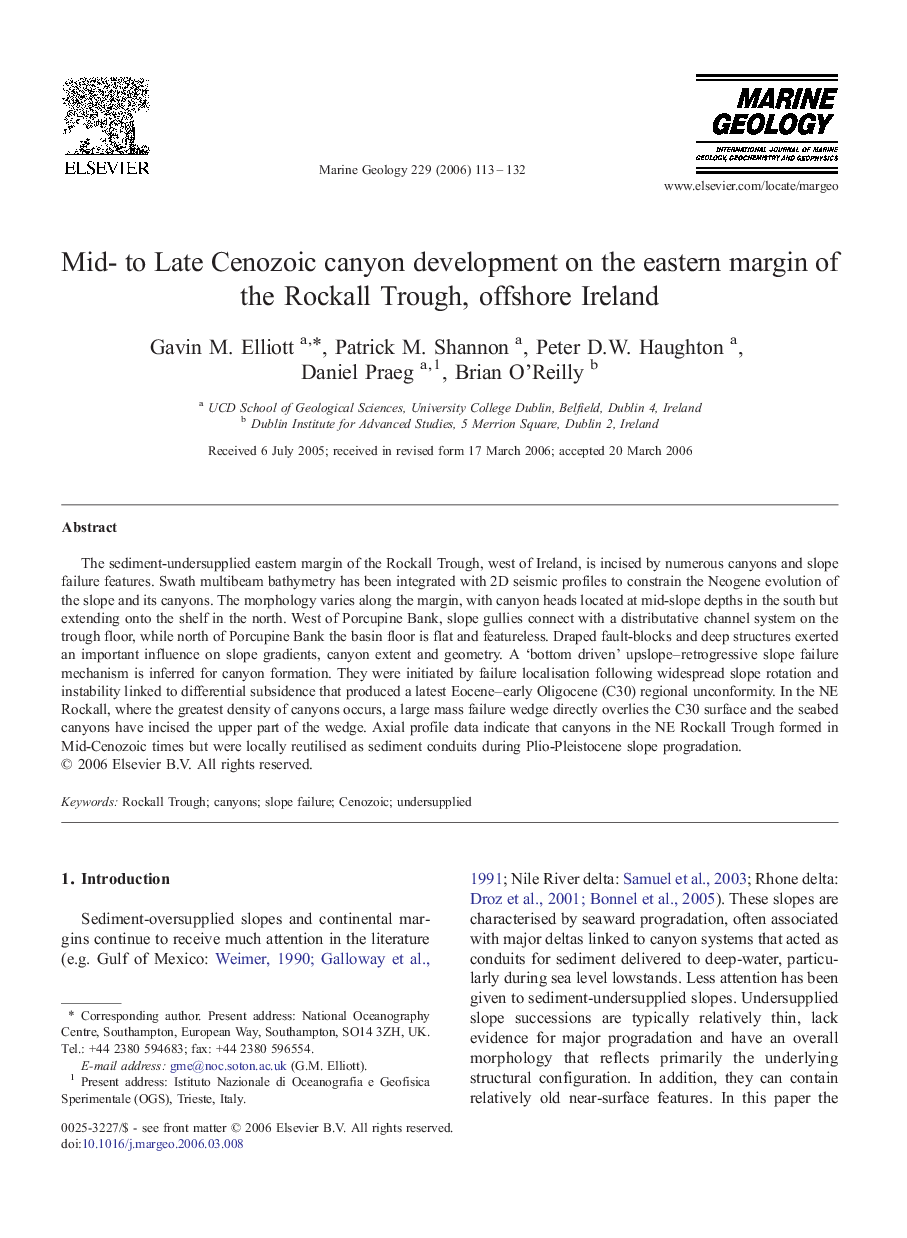| Article ID | Journal | Published Year | Pages | File Type |
|---|---|---|---|---|
| 4719826 | Marine Geology | 2006 | 20 Pages |
The sediment-undersupplied eastern margin of the Rockall Trough, west of Ireland, is incised by numerous canyons and slope failure features. Swath multibeam bathymetry has been integrated with 2D seismic profiles to constrain the Neogene evolution of the slope and its canyons. The morphology varies along the margin, with canyon heads located at mid-slope depths in the south but extending onto the shelf in the north. West of Porcupine Bank, slope gullies connect with a distributative channel system on the trough floor, while north of Porcupine Bank the basin floor is flat and featureless. Draped fault-blocks and deep structures exerted an important influence on slope gradients, canyon extent and geometry. A ‘bottom driven’ upslope–retrogressive slope failure mechanism is inferred for canyon formation. They were initiated by failure localisation following widespread slope rotation and instability linked to differential subsidence that produced a latest Eocene–early Oligocene (C30) regional unconformity. In the NE Rockall, where the greatest density of canyons occurs, a large mass failure wedge directly overlies the C30 surface and the seabed canyons have incised the upper part of the wedge. Axial profile data indicate that canyons in the NE Rockall Trough formed in Mid-Cenozoic times but were locally reutilised as sediment conduits during Plio-Pleistocene slope progradation.
